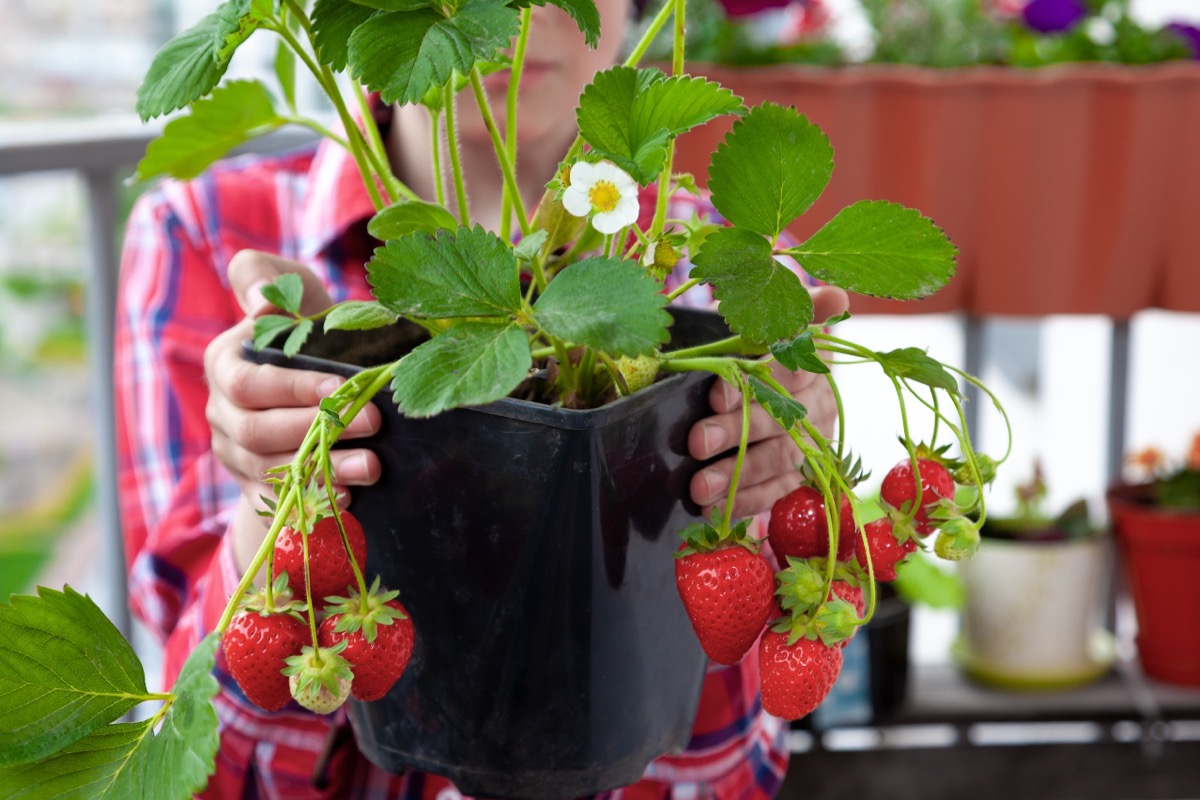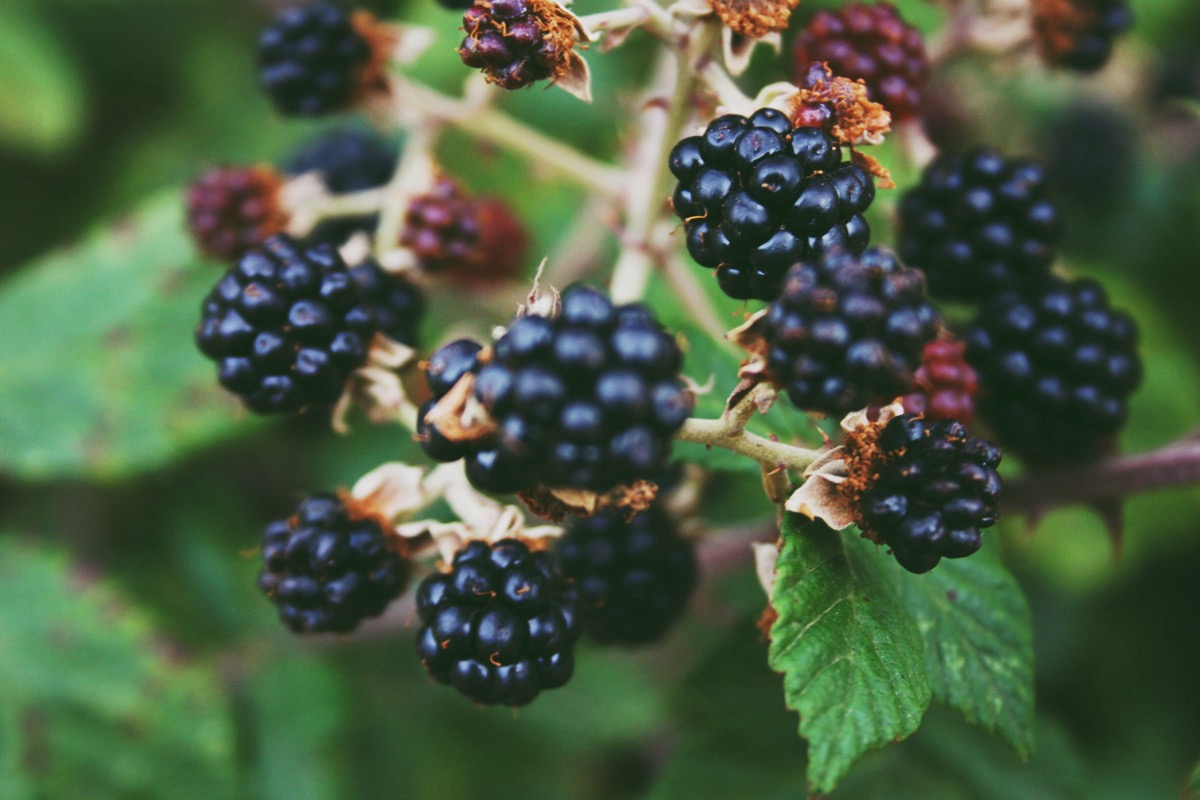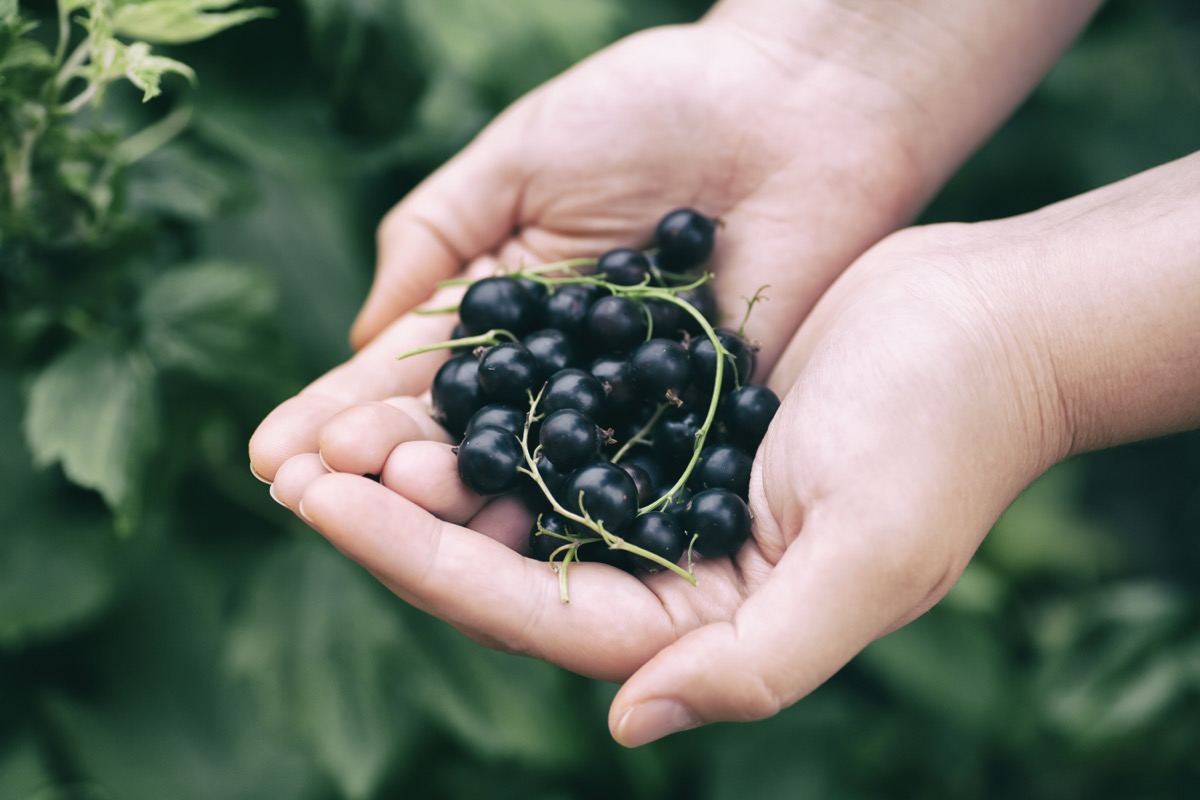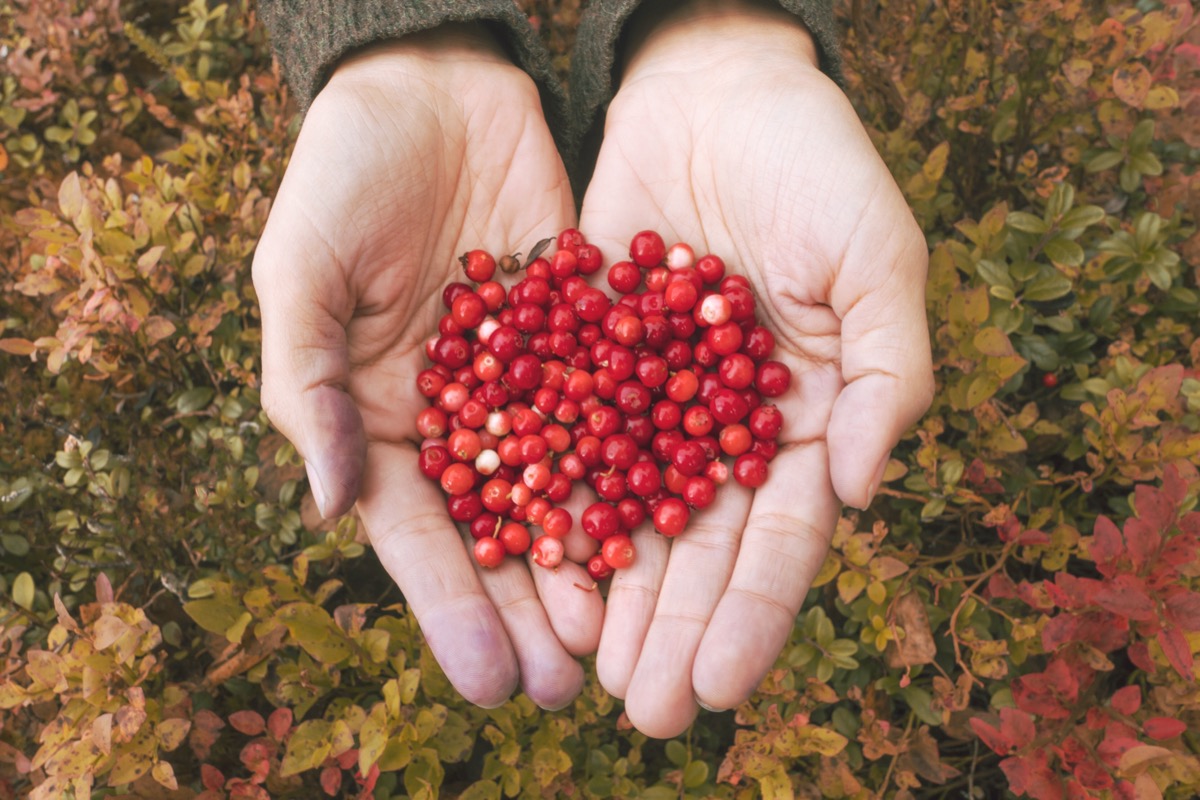Growing berries in containers is a great way to get fresh produce at your fingertips. Plus, container gardening eliminates the need for a large garden plot, making it suitable even for those with limited space. If you’re considering growing berries in containers, you might be wondering which ones are best suited to this mode of cultivation.
With careful consideration given to selecting varieties suitable for container-growing and providing adequate soil drainage and nutrition, you’ll be able to harvest delicious homegrown berries throughout the season. If you want an easy way to add homegrown produce into your diet without taking up too much space or making too large, an investment in growing berries in containers is worth considering. Let’s check out 9 best Berries to grow in containers below.
Benefits of growing Berries in containers
- If you love fresh berries but don’t have the space (or time) for a full-fledged garden, don’t despair. You can still enjoy the fruits of your labor by growing berries in containers. Not only are berries relatively easy to grow, but they also offer several benefits when grown in containers.
- One of the biggest benefits of growing berries in containers is that it’s much easier to control the environment. This is especially important for delicate varieties, which can be sensitive to temperature fluctuations and pests.
- Growing them in containers can keep them sheltered from extremes and better protect them from predators. Finally, growing your berries in containers can save you money at the grocery store. Fresh berries can be expensive, especially out of season. But if you grow your own, you can enjoy fresh-picked fruit all year long and save yourself a pretty penny.
In case you missed it: How to Grow Berries in USA: At Home in Pots, Containers, Indoors, and Tips

9 Best Berries to grow in containers
Strawberries
- If you love the taste of fresh berries, you may wonder if it’s possible to grow them in containers. While some berries are better suited for container gardening than others, Strawberries are a great option. Container-grown Strawberries can be just as delicious as those grown in the ground, and they’re much easier to protect from pests and diseases.
- When choosing a container to grow Strawberries, ensure it’s at least 12 inches wide and has drainage holes. You can use a traditional pot or a hanging basket; make sure the container is deep enough to allow the roots to spread out. Fill the pot with potting mix, and water it well before planting.
- It’s best to plant Strawberry runners in early spring. When setting out your plants, space them about eight inches apart, so they have room to grow. Gently remove the runners from their pots and plant them in the center of each hole, ensuring the crown is level with the soil surface. Backfill around the roots with potting mix and water thoroughly.
- Once your Strawberries are planted, give them regular irrigation during dry weather. They’ll also need fertilization every few weeks during the growing season. Be sure to use a fertilizer formulated for fruits and vegetables; too much nitrogen will encourage leaf growth.
In case you missed it: Growing Strawberries from Seed to Harvest: A Complete Planting Guide for Beginners

Acai Berries
- The Acai berry is a small, round, purple fruit that resembles a grape. Acai Berries are very high in antioxidants and have a variety of health benefits. Acai Berries are one of the best berries to grow in containers. They are easy to grow and can thrive in most climates. If you have a colder climate, you can grow Acai Berries indoors.
- Acai Berries prefer well-drained, slightly acidic soil and full sun. When grown in containers, you should fertilize every two weeks with a balanced fertilizer. Acai Berries can be grown in containers. They need full sun and well-drained soil.
Raspberries
- Raspberries are a delicious and easy-to-grow fruit that can be grown in containers. They are perfect for small spaces and add beauty to any patio or deck. Raspberries require little maintenance and can be harvested from June through October.
- When growing Raspberries in containers, it is important to use a well-draining potting mix and to water regularly. Be sure to fertilize your plants every few weeks to promote healthy growth. Choose a container at least 12 inches wide and 18 inches deep, and place it in an area that receives full sun.
- Raspberries are a great fruit to grow in containers. They are very versatile and can be used in many different recipes. Raspberries can be grown in containers but prefer at least 6 hours of sunlight daily. If you live in an area with cold winters, you must bring your Raspberry plants indoors or purchase a heated greenhouse.
- When growing Raspberries in containers, it is important to use a well-draining potting mix. You can add some organic matter to the mix to help retain moisture. Water your Raspberry plants deeply, but do not over-water them. Allow the top few inches of soil to dry out before watering again.
- Harvest your Raspberries when they are ripe and ready to eat. Cut the stem above the fruit, careful not to damage the plant. It is best to start with nursery-grown plants, as they are less likely to harbor diseases than seedlings. Once you have your plants, remove them from their pots and plant them in your container.
Blackberries
When it comes to growing berries in containers, Blackberries are one of the best options. If you want to grow Blackberries in a container, you will need a pot at least 12 inches deep and 24 inches wide. Be sure to use a good-quality potting mix that is designed for containers. When it comes to watering, Blackberries need consistent moisture but don’t like sitting in wet soil. Let the top few inches of soil dry before watering again.
In case you missed it: Best Fertilizer for Blackberries: Homemade, Organic, Compost, Natural, Liquid, NPK Ratio, How and When to Apply

During the fruiting season, you may need to water more frequently as the plants use more water. Fertilizing is also important for Blackberry plants. Use a balanced fertilizer every few weeks during the growing season. To boost the plants, you can add compost or manure to the potting mix before planting.
Blackberry plants need full sun exposure to produce lots of fruit. If you live in an area with hot summers, you may want to provide some afternoon shade to prevent the leaves from burning. In cooler climates, the morning sun is best. Once your Blackberry plants are established, they will produce fruit for many years with minimal care.
Blueberries
Blueberries are relatively easy to care for anddon’tt require a lot of space. Blueberries can be grown in a wide range of containers, from small pots to large barrels. When choosing a container for your Blueberries, ensure they have good drainage. You may drill holes in the bottom of the container if itdoesn’tt already have them. You should use a well-draining potting mix when planting your Blueberries.
Blueberries prefer full sun but will tolerate partial shade. However, hot summers may need some afternoon shade to prevent the berries from getting too ripe too quickly. Blueberries are relatively easy to care for and can produce a large crop in a small space. Blueberries prefer well-drained, acidic soil with a pH of 4.5 to 5.5. You can use a soil mix made specifically for Blueberries or amend your soil with peat moss or composted pine bark. Blueberries require full sun to produce the most fruit but will tolerate some shade.
In case you missed it: How to Plant Blueberries from Seeds: A Beginners Guide to Sowing to Harvest

Water blueberry plants regularly, especially when fruits are forming and ripening. Fertilize Blueberries in early spring with an organic fertilizer or one formulated for acid-loving plants. Apply it according to package directions and stop fertilizing about six weeks before harvest. Water your blueberry plants regularly, ensuring the soil stays moist but not soggy. Fertilize monthly with an organic fertilizer during the growing season. Harvest your Blueberries when they are plump and dark blue.
Mulberries
Mulberries can be grown from seed, but it is best to start with a young plant. Container-grown Mulberries must be fertilized regularly and pruned to keep them from getting too large. Mulberries are a great berry to grow in containers because they are drought tolerant and can withstand high temperatures. They can be grown in any container, but it is important to ensure that the container has good drainage. Mulberries prefer full sun but will tolerate some shade.
Mulberries are self-pollinating, so you only need one plant to produce fruit. However, you will get more fruit if you have two or more plants. Mulberries can be propagated from softwood cuttings from new spring growth. Mulberries are very easy to care for and require little pruning. Fertilize your plants in the spring with a balanced fertilizer and water them regularly. Mulberries are susceptible to root rot, so ensure the container has good drainage.
Black Currants
- Black Currants are perfect for containers since they only grow to about 3 feet tall. They produce small, round, black fruits high in vitamin C and antioxidants. Black Currants are a type of berry that can be grown in containers. They are a delicious, healthy option for those looking for an alternative to traditional berries.
- Black Currants have several health benefits, including improving vision and reducing cancer risk. When growing black Currants in containers, choosing a pot at least 12 inches wide with drainage holes is important. The plants will also need regular watering and fertilizing.
In case you missed it: Best Fertilizer for Blackberries: Homemade, Organic, Compost, Natural, Liquid, NPK Ratio, How and When to Apply

Gooseberries
Gooseberries are a type of shrub that produces small, tart berries. Gooseberries are relatively easy to grow in containers and make an attractive addition to any patio or deck. When choosing a container for Gooseberries, be sure to select one that is at least 18 inches wide and deep. Alternatively, you can grow Gooseberries in hanging baskets.
To plant Gooseberries in containers, fill the pot with peat moss, compost, and perlite. Gently loosen the roots of the plant before placing it in the pot. Water the plant continuously until water drains from the bottom of the pot. Gooseberries require full sun and well-drained soil. Be sure to water regularly, especially during dry periods. Fertilize plants monthly with a balanced fertilizer such as 10-10-10. Harvest Gooseberries when they are fully ripe but still firm to the touch. Cut clusters of berries from the stem using sharp scissors.
Cranberries
- Cranberries are tart and tangy berry that is perfect for growing in containers. Cranberries are relatively easy to grow anddon’tt require much space, making them ideal for small gardens or balconies. With proper care, your Cranberry plant can produce fruit for many years.
- When choosing a container for your Cranberry plant, ensure it is at least 18 inches wide and has drainage holes in the bottom. You can use a plastic or ceramic pot; make sure it is sturdy enough to support the plant. Fill the pot with potting mix, such as one for berries.
- Cranberries prefer full sun but can tolerate partial shade. If you live in an area with hot summers, give your plant some afternoon shade to prevent the leaves from burning. In general, Cranberries do best in temperatures between 15 to 21°C.
- Water your Cranberry plant regularly, keeping the soil moist but not soggy. Cranberries are susceptible to root rot, soit’ss important not to let the roots sit in water. During the fruiting season, increase watering slightly to help the berries swell. Fertilize your Cranberry plant monthly during the growing season with a balanced fertilizer. Once the berries start to form, reduce fertilization to every other month.
In case you missed it: 15 Cold Hardy Tropical Plants: For Cold Climates

Conclusion
Growing berries in containers can be the best way to provide yourself with fresh, homegrown produce. Select the right variety of berries for your climate and ensure the right soil conditions and container size for each one. With proper care and maintenance, these plants will reward you with delicious fruit that will make a delightful addition to any meal.
- How to Grow Hibiscus from Flower
- Plantation Ideas for Home Decoration: A Beginners Guide
- Flower Garden Designs and Layouts for Beginners
- Planting and Spacing Techniques in Papaya: A Beginner’s Guide
- Growing Gold: Essential Techniques for Planting Pineapples
- How to Make Kalanchoe Plant Bushy: Home Remedies and Solutions
- 11 Reasons Why Your Gardenia is Not Blooming: Home Remedies and Solutions
- Eco Elegance: The Guide to Designing a Drought-Tolerant Landscape
- Gardening on a Slope: Strategies for Hillside Landscaping
- Nourish and Flourish: Top Organic Mulches for Thriving House Plants
- Everything You Want to Know about Indian Mogra Flower: Discover Uses and Growing
- Green Thumb Success: Expert Tips for Cultivating Greenhouse Pumpkins All Year Round
- Maximize Growth & Flavor: The Ultimate Guide to Companion Planting in Herb Gardens
- How to Control Rhododendron Problems Naturally: Home Remedies and Organic Ways to Fix Them
- Natural Magic: The Remarkable Benefits of Cinnamon for Plants
- Best Steps to Revive Dying Tulip with Natural and Organic Treatment
- 10 Reasons Why Your Angel Trumpet is Not Blooming: Remedies and Treatment
- How to Fix Periwinkle Leaf and Flower-Related Problems: Natural Remedies and Solutions
- How to Fix Zinnias Leaf and Flower Problems: Discover Natural and Home Remedies
- Organic Steps to Induce Lemon Tree Flowers: A Comprehensive Guide
- Bloom Booster: Crafting the Perfect Homemade Bougainvillea Fertilizer
- Optimizing Growth: A Guide to Applying NPK Fertilizer for Potted Plants
- 10 Best Homemade Fertilizers for Rubber Plant: DIY Recipes and Application Method
- How to Boost Female Pumpkin Flowers: Effective Steps for More Flowers and High Yields
- Transform Your Indoor Garden: Top Benefits of Pink Salt for Houseplants
- 10 Best Homemade Fertilizers for Peacock Plants (Calathea): Easy DIY Guide
- Unlock Blooms: 9 Reasons Why Your Potted Chrysanthemum is Not Blooming
- 8 Reasons Why Your Potted Hibiscus is Not Blooming: Fix it with Simple Solutions
- Unlock Blooms: 9 Key Reasons Your Potted Frangipani Won’t Flower
- 10 Reasons Why Is My Ice Plant Not Blooming: Remedies and Treatment
- 10 Reasons Why My Potted Hydrangea Not Blooming: Treatment and Remedies
- 10 Reasons Why is My Wisteria Not Blooming: Remedies and Treatment
- 10 Reasons Why is My Goldfish Plant Not Blooming: Remedies and Treatment
- Maximize Your Space: Ultimate Guide to Balcony Gardening with Grow Bags
- 10 Reasons Why Your Iris is Not Blooming: Remedies and Treatment
- 10 Reasons Why Your Anthurium Plant is Not Blooming: Treatment and Remedies